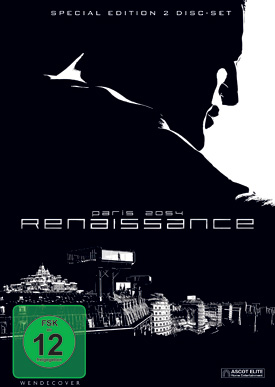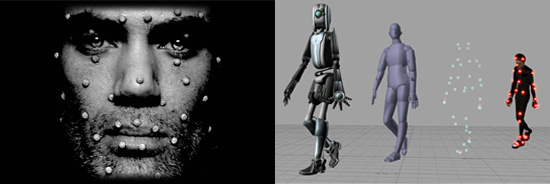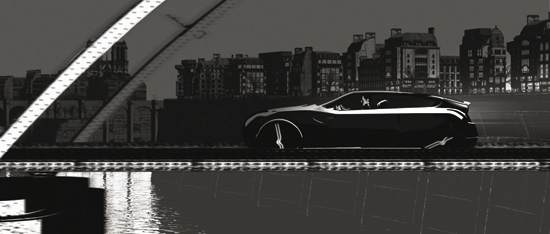Films in Focus Renaissance (Christian Volckman, 2006)
It is time again to introduce a movie close to my heart: “Renaissance”, an animated science fiction film by Frenchman Christian Volckman from 2006, with a very special visual language.


Paris, 2054. Ilona Tasuiev, a scientist working for the powerful Avalon corporation, has been kidnapped. This is, of course, unacceptable, and so police inspector Barthélémy Karas is assigned to the search. He contacts Ilona’s pretty sister Bislane, interrogates Avalon’s leaders, and meets one of their former scientists, Jonas Muller. Gradually, his investigations uncover a conspiracy that Ilona fell victim to – triggered by her research into a process to make humans immortal.
The story is quite conventional, does not take any really surprising turns and does not impress with particularly unusual philosophical thoughts on the subject of immortality. But it is the aesthetics of the film that make it worth watching.
Motion capture as the basis for a dark black-and-white aesthetic

Credits: Motion Capture Facial, image on the left by Mounirzok, CC BY SA
Credits: Activemarker 2, picture right by Hypocrite, Public Domain license
Renaissance was technically realized by means of motion capture, in which the movements of actors are used as the basis for a later model on the computer. Sensors are attached to the body of an actor to capture his movements. However, while the technology is mostly used to create the most realistic impression possible (as in the case of Hironobu Sakaguchi’s “Final Fantasy” [2001], James Cameron’s “Avatar” [2009] or even the various individual animated figures such as Jar Jar Bings in Star Wars, Davy Jones in Pirates of the Caribbean or Gollum in The Lord of the Rings), Christian Volckman takes a different approach: aesthetics instead of realism.

The film is almost exclusively in black and white, with shades of grey only rarely added to visualize glass surfaces. Aesthetically, this reminds me of Frank Miller’s “Sin City” (2005), but Volckman goes a few steps further. At first, it is impressive how he manages to create different textures of fabrics using only two colors. The way the figures emerge from the shadows and often enough blend with them reminds of film noir. Only the childlike drawings are kept in bright colors – and this statement overlays the conventional story, becoming a subtle philosophy. The film’s greatest moment remains the scene when Inspector Karas observes the mysterious scientist Muller through the window during an operation. The way in which a new face is formed from the shadowy contours of Karas and the brightly lit face of Muller in the reflection of the window – that is great cinematic art and also foreshadows much that the viewer cannot yet know.

Conclusion: a must-see for anyone interested in visual aesthetics
Admittedly, the story is nothing new. But for those who are interested in experiments in cinematic aesthetics, I would really recommend “Renaissance”: the way Volckman plays with the possibilities offered by the chosen method is absolutely worth seeing. As is so often the case, the artistic appeal of his work lies precisely in the reduction to two, rarely three, colors. This is not only an exciting stylistic exercise, but in the good moments it also impressively shows how style and content can be linked. For those who are interested: The movie is currently available cheap on Amazon, and no, that is not an affiliate link.
Image credits: scene stills and DVD cover courtesy of the German distributor Ascot Elite (explicitly excluded from the CC license of my text)